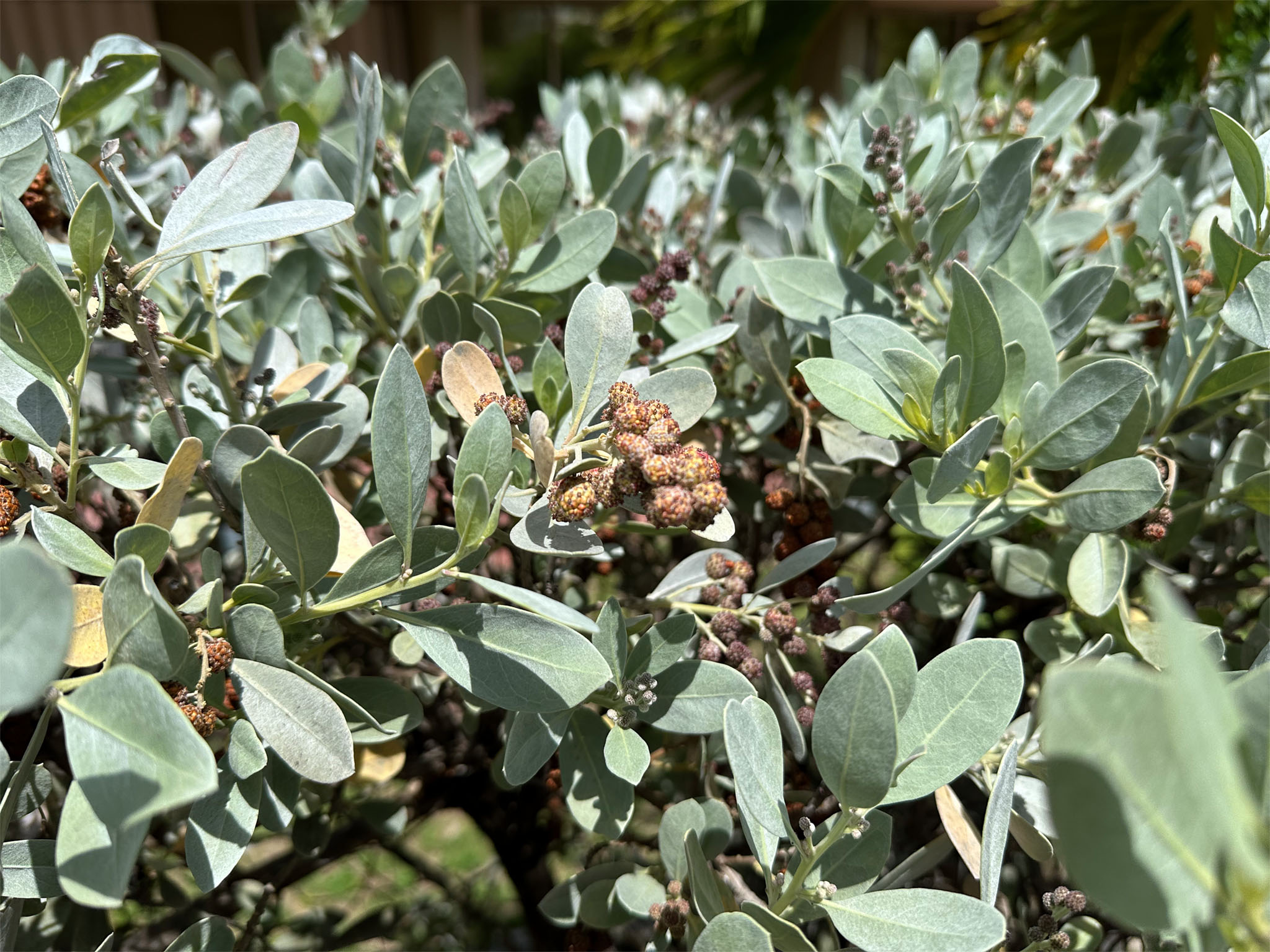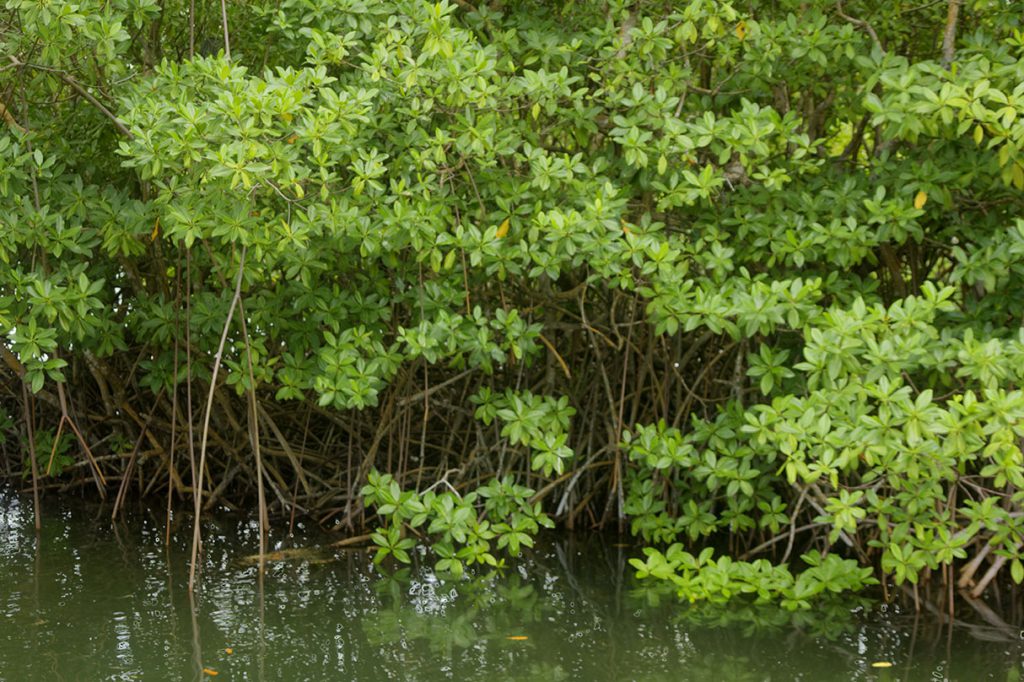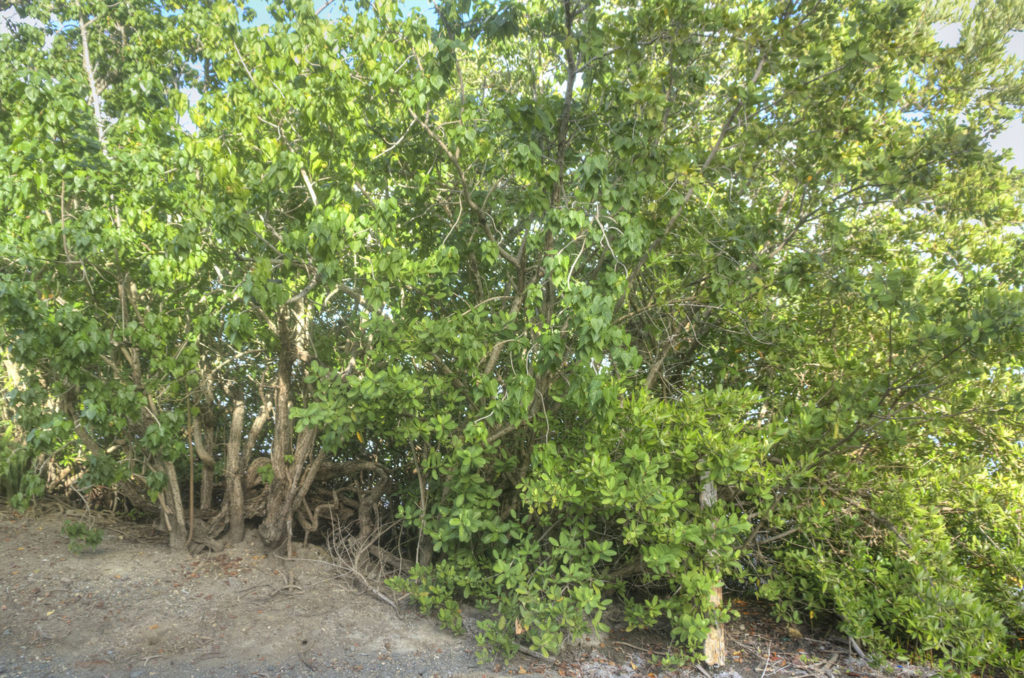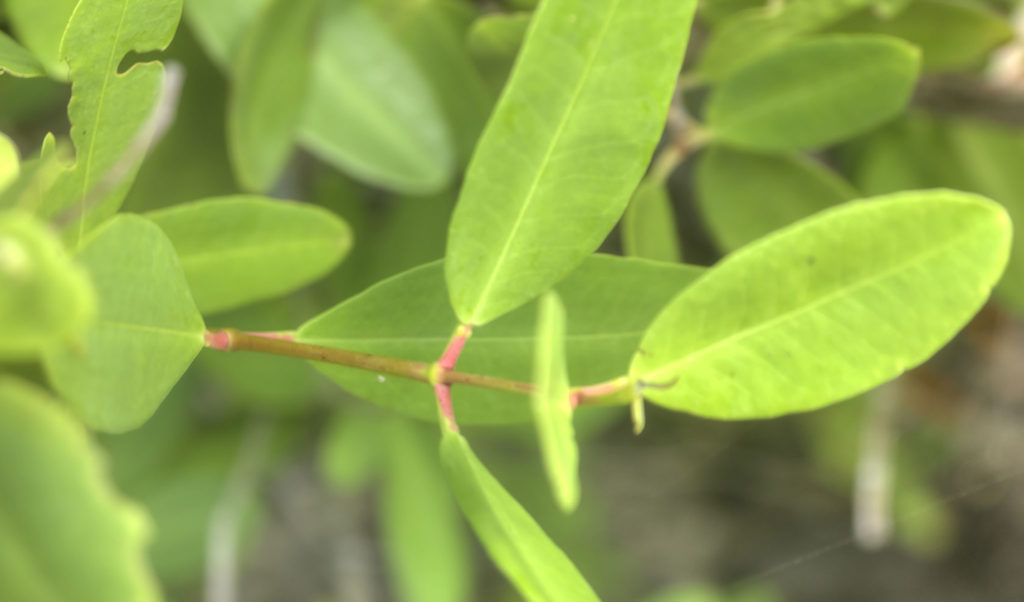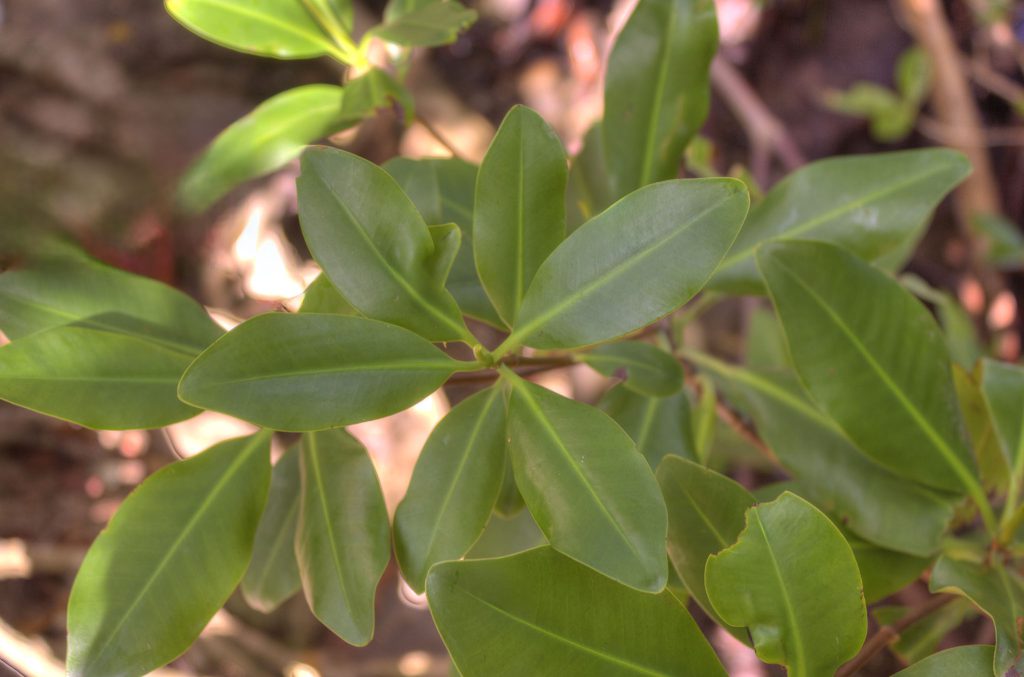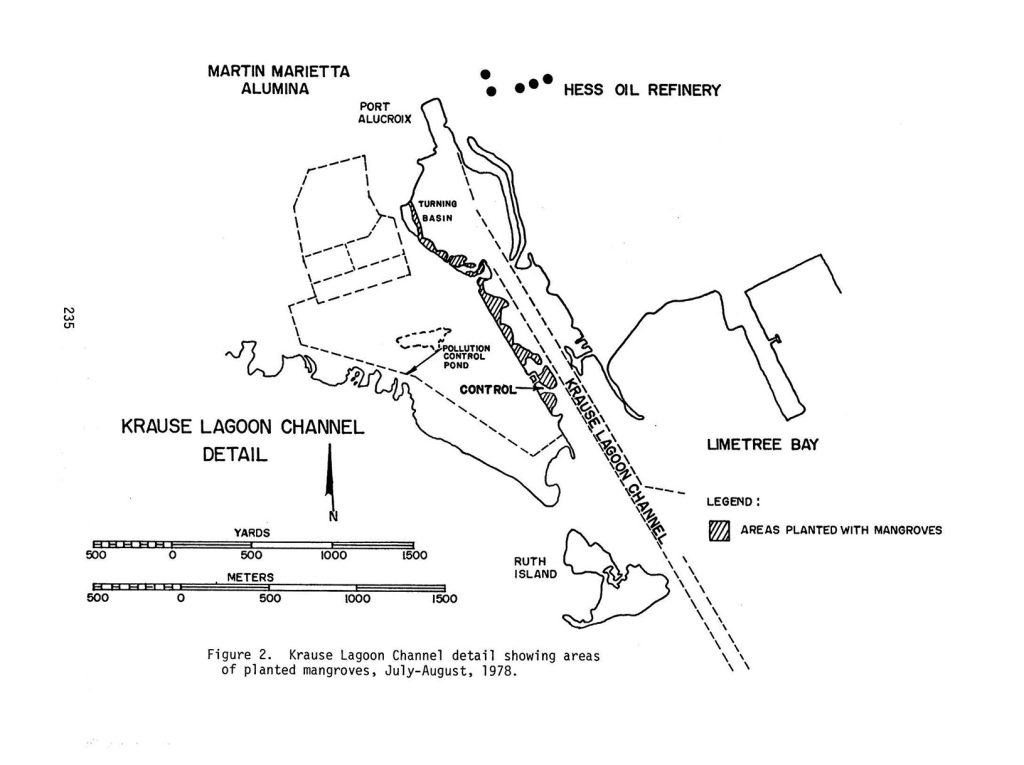Mangrove Tree
Scientific name: Rhizophora mangle, Laguncularia racemosa, Avicennia germinans
Common names: Red mangrove, White mangrove, Black mangrove
Red Mangrove (Rhizophora mangle) is predominant. These unique trees are well-adapted to survive in challenging coastal environments, making them an essential part of the local landscape.
The characteristic prop roots elevate the crown of the tree above the salt water.
Black Mangroves, and white mangroves do not have prop roots, are less populous and found somewhat inland from the Red Mangrove – more at the water’s edge. This example of both, growing alongside each other, is located at the edge of Salt River Bay, on North Shore Road, alongside the Kayak launch ramp.
The White Mangroves (Laguncularia racemosa) grow in the same area as the Black mangrove but are identified by the two, salt excreting glands at the base of the leaf, whereas the black mangrove has a larger, deeper green leaf..
World estimates put the number of true mangrove species from about 50 to more than 70. Only three are represented on St Croix, and all three species can be found at Salt River. In addition, the Buttonwood is in the mangrove family but does not provide the same ecological benefits as the other three mangroves.
Scientists theorize that the earliest mangrove species originated in the Indo-Malayan region. This theory is supported by the fact that there are more mangrove species present in that region than anywhere else in the world. Early mangrove floating propagules spread westward by ocean currents to India, East Africa, and eastward to the Americas, arriving in Central and South America during the upper Cretaceous period and lower Miocene epoch (66 and 23 million years ago). This may explain why the mangroves of the Americas contain fewer and similar colonizing species, while those of Asia, India, and East Africa contain a fuller range of mangrove species. A great resource about mangroves – American Museum of Natural History.
Mangroves are known for their ability to thrive in saline water and withstand strong winds and tidal fluctuations, and their extensive root system firmly anchors them, providing stability and protection against erosion; particularly crucial in coastal areas where waves and storms can cause significant damage.
One of the most significant contributions of mangroves is their role in supporting biodiversity. The complex root systems create a diverse habitat, providing shelter and food for a wide range of organisms. Many fish species rely on mangroves as nursery grounds, where they can find protection and abundant food sources. Additionally, numerous bird species use mangroves as nesting sites and feeding grounds.
Beyond supporting local wildlife, mangroves also offer benefits to human communities, acting as a natural buffer against storm surges and mitigating the impact of hurricanes. Mangroves also serve as carbon sinks, absorbing carbon dioxide, releasing oxygen, and sequestering large amounts of carbon, thus playing a role in mitigating climate change.
The leaves of the Black Mangroves (Avicennia germinans)are described as silvery green and have a thick and leathery texture. They are typically elliptic or oblong in shape, measuring around 2-3 inches (5-7 cm) in length. The upper surface of the leaf is dark green and may have salt crystals on the surface, excreted to help the tree tolerate high salinity levels.
One can differentiate between Black and White by the presence or absence of the salt excreting glands.
In The Fifth Great Mangrove Cleanup in April 2022, 4,450lbs of various types of waste and pollutants were removed from just one half mile of shoreline in Vessup Bay, St Thomas, including plastic bags, bottles, fishing gear, and chemical containers. Human-generated waste and pollution are threatening the health and integrity of mangrove ecosystems. The DPNR Commissioner “may issue permits, on a case by case basis, for the pruning, cutting or removal of mangrove trees by species and area, in accordance with Title 12, Chapter 21, Virgin Islands Code.”
Mangroves on St Croix face various threats, including coastal development, and pollution. These factors can disrupt the delicate balance of the ecosystem and lead to the loss of mangrove habitats. Efforts have been made to protect and restore mangroves through conservation initiatives and awareness campaigns. During the summer of 1979, 65,000 Red Mangrove seeds were planted at a mitigation site on St Croix. After 6 weeks approximately 75% had survived.
The Buttonwood tree, scientifically known as Conocarpus erectus, is in the mangrove family but does not provide the ecological benefits of the mangroves. However, due to its tolerance for salt water environments, it is recognized by DPNR as one of six plants useful for coastal erosion control.
As with its’ cousins, it is known for its salt tolerance and is often found in coastal areas. It has distinctive button-like flower heads and can grow in a variety of soil types.
Along with the Sea Grape, the Buttonwood has been under consideration to ameliorate shore erosion, however, the Sea Grape has a deeper and broader root structure and its canopy provides better shelter.
